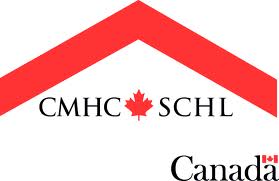Royal Bank Quietly Cuts Some Mortgage Rates, The Globe and Mail
This article appeared on the Globe and Mail‘s website on January 20th, 2014 and was written by Tara Perkins.
Royal Bank of Canada, the country’s largest mortgage lender, has quietly cut some of its mortgage rates this weekend. The move appears to be part of a broader dip in rates, although economists generally still expect an increase in 2014.
Five-year fixed mortgage rates rose industry-wide for much of 2013, from their low of 2.64 per cent in April to their high of 3.39 per cent in September, according to Alyssa Richard, the chief executive officer of RateHub.ca. They edged down a bit later in the fall but had generally been steady at around 3.25 per cent since then.
RBC is now cutting its two-, three-, four– and five-year fixed mortgage rates each by 10 basis points. In an emailed statement, the bank said that some mortgage lenders have recently been pricing at lower rates, prompting it to move.
Royal Bank is often a price leader when it comes to mortgages, and other big banks frequently follow suit after it changes its prices. Its five-year fixed mortgage rate is now 3.69 per cent.
Mortgage prices tend to follow changes in five-year government bond yields because of the impact that those yields have on banks’ funding costs. The yield on five-year government of Canada bonds has fallen from 1.95 per cent on December 31st to 1.71 per cent on January 16th, according to Bank of Canada data, although it fluctuated during that time.
Canadian bond yields tend to follow U.S. bond yields. Yields began rising last May after U.S. employment numbers came in much better than expected, raising hopes for the U.S. economy. Then they shot up further after U.S. Federal Reserve chairman Ben Bernanke suggested the central bank could start tapering its asset-buying program, a signal that he thought the economy’s health was improving.
While the U.S. central bank has begun tapering, December jobs numbers and some other recent data have been disappointing, and caused bond yields to fall.
Most economists still expect that both yields and mortgage rates will tick up gradually through 2014, as the U.S. economy improves and the central bank continues to back off of its asset-buying program, known as quantitative easing.
But as Ms. Richard points out, it is possible that the U.S. economy will prove to be weaker than expected, and that could result in further decreases in bond yields and mortgage rates.
Royal Bank of Canada, which normally issues a press release when it changes its mortgage rates, made this move quietly, simply posting the new rates on its site. The news was reported this weekend by the blog Canadian Mortgage Trends.
Bank of Montreal dropped its five-year rate to 2.99 per cent early last year, spurring a price battle that angered Finance Minister Jim Flaherty. Mr. Flaherty has taken numerous steps, such as tightening the mortgage insurance rules, to prevent consumers from taking on too much mortgage debt. Policy-makers have been trying to warn consumers that, at some point, rates will rise.

 Canada Mortgage and Housing Corp. is putting a cap on the amount of mortgage-backed securities sold by banks that it is willing to guarantee.
Canada Mortgage and Housing Corp. is putting a cap on the amount of mortgage-backed securities sold by banks that it is willing to guarantee. When your mortgage comes up for renewal, your lender will send you a letter suggesting you renew at their current offer. If you do, you’ll be renewing your mortgage with your eyes closed! This is your moment of opportunity to negotiate the best possible deal, either with your current lender or with a new one. Do you know if the same lender remains your best choice? If you don’t, you aren’t alone.
When your mortgage comes up for renewal, your lender will send you a letter suggesting you renew at their current offer. If you do, you’ll be renewing your mortgage with your eyes closed! This is your moment of opportunity to negotiate the best possible deal, either with your current lender or with a new one. Do you know if the same lender remains your best choice? If you don’t, you aren’t alone.